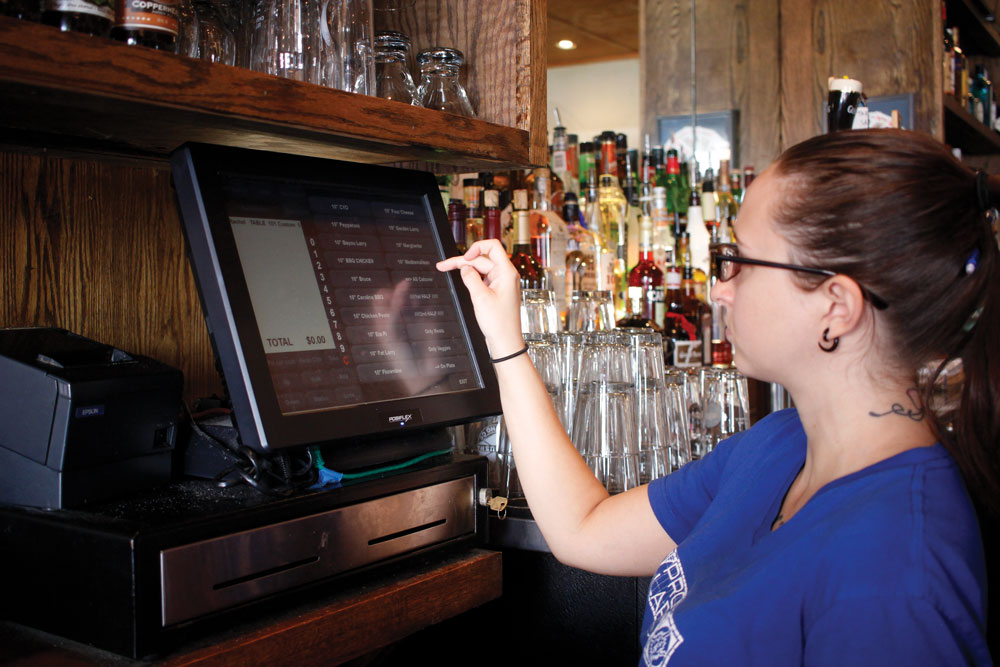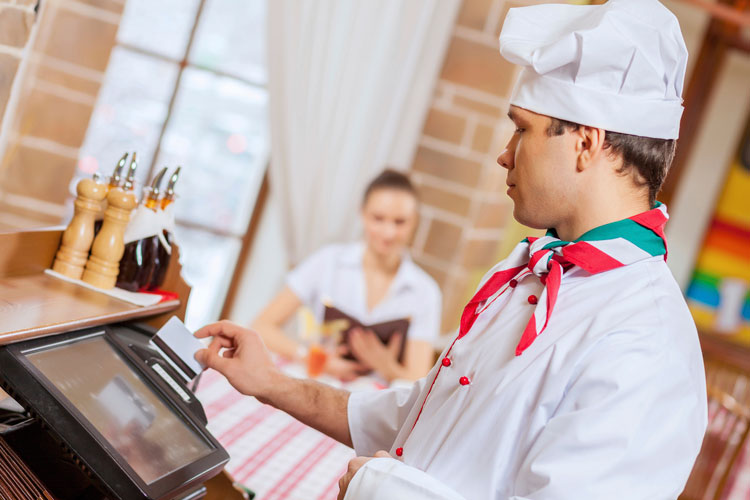Today’s customers crave more authentic connections to brands, receiving personalized communications and offers, feeling their feedback is valued, and being rewarded for their loyalty. Luckily, modern technology can help: Today’s POS systems allow you to track, analyze and act on consumer behavior more comprehensively than ever before—from what they’re most likely to purchase at your pizzeria to how they’re interacting on social media outlets. We’ve tapped experts from a range of fields to explain the many ways in which POS systems can keep you better connected with customers.
The Ties That Bind
 The Expert: Kevin Myers, chief marketing and information officer, Donatos Pizza, Columbus, OH
The Expert: Kevin Myers, chief marketing and information officer, Donatos Pizza, Columbus, OH
The Donatos POS system is integrated with our new loyalty platform. It connects the things we want to learn about a customer, including their visits and products purchased, with learning more about them—such as favorite flavor profiles, dining habits and social media handles. This all starts at the register when we ask for their telephone number.
With our rewards program, Donatos Pizza Love Rewards, a customer earns points as he completes his profile. Once we receive a customer’s telephone number—which is linked to the rewards program—it kicks off a series of events that allows us to learn more about them and their purchases, and tells us how we can reward and interact with them on social media. We reward customers for not only their purchases, but by telling us more about themselves, which can include their social media handles.
|
Brands like Domino’s and Donatos are tapping POS systems to offer delivery tracking to customers. |
We also reward them for referring other people to us through their own unique code link. If someone is invited to and joins our rewards program, the person who made the referral earns points once the new member places their first order. Additionally, another feature will be enabled after a customer provides their social handle: When they do any storytelling that involves our brand, pizza or meal moments that are tagged to us, they will earn points. Ultimately, we’re moving away from transactions to customer interactions by integrating POS, loyalty and social media.
Looking ahead, we will be able to achieve greater time savings by extending the point of sale to delivery drivers with routing and tracking. This will allow us to track delivery drivers and determine when to start making the next order so that it’s ready as the delivery driver arrives back at the store. We can also track how long it takes our delivery driver to get to the customer and back, while allowing customers to see where their pizza is.
Feedback Frenzy
 The Expert: Sastry Penumarthy, co-founder and VP of marketing, Punchh, San Mateo, CA
The Expert: Sastry Penumarthy, co-founder and VP of marketing, Punchh, San Mateo, CA
The point of sale provides a great opportunity for brands to get guest feedback—and convert loyal guests into brand advocates by enabling guests to share their feedback on platforms like Facebook and Twitter. However, brands need to think first in the context of how they want to deepen customer relationships and loyalty, before figuring out how POS and social media platforms can be utilized.
Store owners should leverage these technologies and social platforms to gather customer feedback, so they can immediately act upon it. Loyal customers are far more likely to make in-store visits, and if a restaurant really has their game on point, loyal customers will likely recommend the brand to their friends on social outlets.
We typically find that when a customer makes a purchase, they’re quick to post to the website’s feedback mechanism. Our data shows, on average, three to four times more reviews than on Yelp for the same store. So smart business owners are ones that reward these high-volume customers on social media, while amplifying these experiences, leading to better feedback and photos across Instagram, Twitter, Facebook, etc. Companies that have a strong social media presence are ahead of the game in terms of brand perception, which means they will have a lot of great feedback data to sort through and collect. This, in turn, will enable businesses to continually create the best guest experience possible.
If a store manager receives social feedback, they should be able to provide customers with an immediate response and thank them for that feedback. They should also provide them with discounts to encourage more social engagement. This helps improve overall service and food quality, and lets them keep in touch with customers over the long term.
Ultimately, pizzeria owners and managers should be implementing the latest technologies that allow them to collect feedback in real time, incorporating software that lets them categorize customer feedback into topics and analyze sentiment automatically. This includes integrating real-time feedback systems into mobile apps so customers don’t have to be annoyed by waiting for a call center. Managers should have a detailed understanding of what their customers are talking about, and it’s critical they identify him by name so that customers aren’t dealing with anonymous feedback. Having solid back-end features will ultimately lead to happier customers who will be singing your restaurant’s praises across the social stratosphere.

Social Media Savvy
 The Expert: Ben Hanzel, chief editor of the POS vertical, BestCompany.com, Pleasant Grove, UT
The Expert: Ben Hanzel, chief editor of the POS vertical, BestCompany.com, Pleasant Grove, UT
The possibilities of integrating your POS with social media include the ability to monitor social activity. You’ll be notified every time a customer tweets, posts or checks in at your location. This saves a lot of time on having to keep tabs on all of your various social media platforms. By tracking all social interactions in a central location, you’ll be more organized—and you’ll be better able to develop a game plan moving forward.
You’ll also boost efficiency through multi-platform integration. If you have specials that are changing depending on the day, this is the easiest way to keep your customers in the loop, without having to spend an hour updating every day on each platform.
The absolute best thing a pizzeria owner can do to help with their social media reach is to post quality content, and post it often. If there’s a new item on the menu, post about it. If there are renovations made to your location, post about that as well. Interesting content gets you a following, and consistency will keep them around.
Signs of the Times
 The Expert: Hakeem James, president, Scroller Media, Cleveland, OH
The Expert: Hakeem James, president, Scroller Media, Cleveland, OH
Working with POS, social media and digital signage, owners can now follow engagement that happens at the table. New software technology is designed to interact with menu boards, so when customers use the pizzeria’s hashtag, the software will upload those customers’ images directly to the screen in the store—while making sure only the authentic and best images are being used. Therefore, owners can know how clients are enjoying the pizzeria in real time—like Yelp, but with positive images only. The software scrubs Instagram, Twitter and Facebook through the pizzeria’s hashtag.
For the next generation of this technology, integration with POS systems can help understand demographics and hence push the content to their screens that’s most relevant. So, for example, if an owner sees pepperoni pizza is popular on that day, they can promote that item on in-store signage. Or, using information from a loyalty program (tied in with a member’s social media account), the software can use a combination of geo-fencing and geo-tracking to get important information to the pizzeria owner. For example, if one of your influencer customers is coming in, you want to make sure you treat them right, because they reach a lot of people with their social media reviews—good or bad.
The bottom line is, the more you know about your customers, the better you can serve them. You want to know who they are, and you want to know their net promoter score. Using old-school methods, it can take weeks or months to track down what people think about your business, and the more businesses you own, the harder it can be to access and monitor that feedback. By the time you find out people are badmouthing your business or have had a negative experience, it can be too late.
Everyone’s on their phones and on social media, and we know it’s only increasing. So instead of running from it, businesses need to run with it and toward it. Closing that feedback loop lets you know in real time what people are thinking about you—and, most importantly, who they are.
Tracy Morin is PMQ’s senior copy editor















